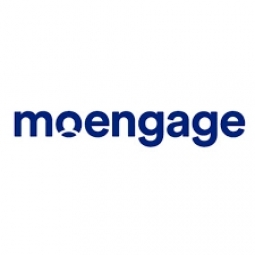Technology Category
- Analytics & Modeling - Machine Learning
- Platform as a Service (PaaS) - Application Development Platforms
Applicable Industries
- Consumer Goods
- Retail
Applicable Functions
- Procurement
- Sales & Marketing
Use Cases
- Retail Store Automation
- Theft Detection
Services
- Testing & Certification
About The Customer
Future Retail operates some of India’s most popular retail chains that inspire trust through innovative offerings, quality products, and affordable prices that help customers achieve a better quality of life every day. On any given day, more than 2 million people visit their stores and digital networks. Tathastu, a subsidiary of Future Group, is focused on creating next-gen consumer interactions using artificial intelligence and machine learning. Tathastu’s mandate is to explore and implement innovative strategies, process, and tools that prepare Future Group for a digital and mobile-first world.
The Challenge
Future Retail, one of India's most popular retail chains, faced a significant challenge with their flagship digital channel, the Future Pay App. The app was designed to acquire, engage, and reactivate dormant users, and improve the average monthly spend of customers. However, a sizeable percentage of consumers had the Future Pay app on their phones but were not using it. There was also room to improve the average monthly spend of Future Pay app users. Furthermore, there was immense potential for Future Pay to engage with customers with personalized coupons and promotions. The team at Tathastu, a subsidiary of Future Group, realized the need to increase adoption of Future Pay. They needed to understand consumer behavior, segment consumers, and then run personalized campaigns to engage them through the Future Pay app.
The Solution
The solution was to implement MoEngage, a common automation tool that would help Future Retail look at customer behavior across brands, formats, and channels. With MoEngage platform plugged into a common data-lake, multiple teams would have a unified view of customers across brands. This unified customer view would help Future Retail analyze behavioral attributes, micro-segment consumers and deliver multi-touch campaigns to re-activate dormant users of the Future Pay app. For instance, the marketing team at “Central” could create a segment of customers who shop at “Big Bazaar”, but not at “Central”. They could then analyze specific behavior patterns of this consumer segment and collaborate with the marketing team at “Big Bazaar” to run specific campaigns for cross promotions and upsells. Additionally, having a unified customer engagement platform also means access to standardized analytics across all brand teams. Marketing teams within FutureRetail now look at the same set of data leading to faster and more accurate decisions.

Case Study missing?
Start adding your own!
Register with your work email and create a new case study profile for your business.
Related Case Studies.
.png)
Case Study
Improving Vending Machine Profitability with the Internet of Things (IoT)
The vending industry is undergoing a sea change, taking advantage of new technologies to go beyond just delivering snacks to creating a new retail location. Intelligent vending machines can be found in many public locations as well as company facilities, selling different types of goods and services, including even computer accessories, gold bars, tickets, and office supplies. With increasing sophistication, they may also provide time- and location-based data pertaining to sales, inventory, and customer preferences. But at the end of the day, vending machine operators know greater profitability is driven by higher sales and lower operating costs.

Case Study
Improving Production Line Efficiency with Ethernet Micro RTU Controller
Moxa was asked to provide a connectivity solution for one of the world's leading cosmetics companies. This multinational corporation, with retail presence in 130 countries, 23 global braches, and over 66,000 employees, sought to improve the efficiency of their production process by migrating from manual monitoring to an automatic productivity monitoring system. The production line was being monitored by ABB Real-TPI, a factory information system that offers data collection and analysis to improve plant efficiency. Due to software limitations, the customer needed an OPC server and a corresponding I/O solution to collect data from additional sensor devices for the Real-TPI system. The goal is to enable the factory information system to more thoroughly collect data from every corner of the production line. This will improve its ability to measure Overall Equipment Effectiveness (OEE) and translate into increased production efficiencies. System Requirements • Instant status updates while still consuming minimal bandwidth to relieve strain on limited factory networks • Interoperable with ABB Real-TPI • Small form factor appropriate for deployment where space is scarce • Remote software management and configuration to simplify operations

Case Study
Digital Retail Security Solutions
Sennco wanted to help its retail customers increase sales and profits by developing an innovative alarm system as opposed to conventional connected alarms that are permanently tethered to display products. These traditional security systems were cumbersome and intrusive to the customer shopping experience. Additionally, they provided no useful data or analytics.

Case Study
How Sirqul’s IoT Platform is Crafting Carrefour’s New In-Store Experiences
Carrefour Taiwan’s goal is to be completely digital by end of 2018. Out-dated manual methods for analysis and assumptions limited Carrefour’s ability to change the customer experience and were void of real-time decision-making capabilities. Rather than relying solely on sales data, assumptions, and disparate systems, Carrefour Taiwan’s CEO led an initiative to find a connected IoT solution that could give the team the ability to make real-time changes and more informed decisions. Prior to implementing, Carrefour struggled to address their conversion rates and did not have the proper insights into the customer decision-making process nor how to make an immediate impact without losing customer confidence.









